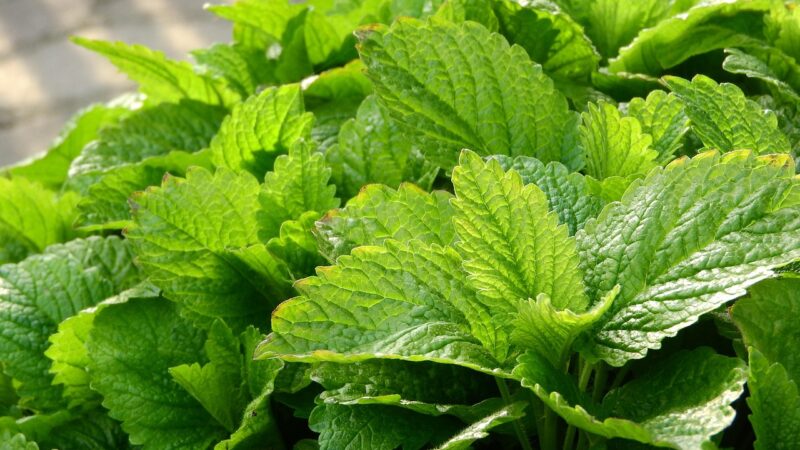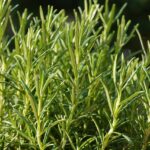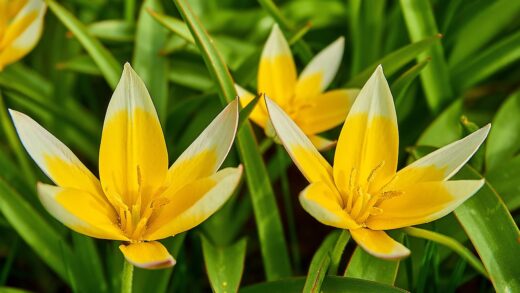The diseases and pests of lemon balm

Lemon balm is prized by gardeners not only for its delightful aroma and culinary versatility but also for its general robustness and resistance to many common garden afflictions. Its leaves are rich in citronellal, an essential oil that acts as a natural deterrent to many insects, making it a relatively pest-free addition to the garden. However, no plant is entirely immune to problems, and under certain conditions, lemon balm can be susceptible to a few specific diseases and pests. Being able to identify and address these issues promptly is key to maintaining the health and vigor of your plants.
The majority of problems that affect lemon balm are related to environmental stress and cultural practices rather than a specific predisposition to disease. Issues such as overwatering, poor air circulation, and insufficient sunlight can weaken the plant’s natural defenses, making it more vulnerable to opportunistic pathogens and pests. Therefore, the most effective strategy for managing diseases and pests is prevention, which begins with providing the plant with its preferred growing conditions. A healthy, thriving plant is always the best defense against any potential threat.
When problems do arise, they are typically fungal diseases, such as powdery mildew, or common sap-sucking insects like aphids. These issues are generally manageable, especially when caught early. Integrated pest management (IPM) strategies, which prioritize cultural and biological controls over chemical interventions, are highly effective for an edible herb like lemon balm. Simple adjustments to your gardening routine can often resolve an issue without the need for pesticides or fungicides.
Understanding the specific threats that your lemon balm might face allows you to be a more proactive and effective gardener. By learning to recognize the early signs of disease or pest infestation, you can take swift and appropriate action. This not only protects your lemon balm but also contributes to a healthier overall garden ecosystem, ensuring that your harvest remains abundant, safe, and flavorful.
Fungal diseases
The most common disease to affect lemon balm is powdery mildew. This fungal pathogen is easily identifiable by the characteristic white, powder-like spots that appear on the surfaces of leaves and stems. While it rarely kills the plant, a severe infection can reduce its vigor, cause leaves to yellow and drop prematurely, and diminish the overall quality of the harvest. The disease thrives in conditions of high humidity, moderate temperatures, and poor air circulation, making it more common in crowded or shaded plantings.
More articles on this topic
Prevention is the most effective way to manage powdery mildew. Ensure your lemon balm plants are spaced adequately to promote good airflow between them, which helps to keep the foliage dry. When watering, apply water directly to the soil at the base of the plant, avoiding wetting the leaves. Pruning dense growth from the center of the plant can also improve air circulation. Planting in a location that receives several hours of morning sun can also help, as the sun will quickly dry any dew from the leaves.
If you notice the first signs of powdery mildew, you can often control its spread with simple, non-toxic treatments. A solution of one part milk to nine parts water, sprayed on the foliage, can be surprisingly effective, as the proteins in the milk have an antiseptic effect on the fungus. Alternatively, a spray made from a teaspoon of baking soda and a few drops of horticultural oil or mild soap mixed in a liter of water can help to change the pH of the leaf surface, making it less hospitable to the fungus.
For more persistent infections, it may be necessary to remove and destroy the most heavily affected leaves or stems to prevent the spores from spreading further. In severe cases, a horticultural fungicide containing sulfur or potassium bicarbonate can be used, but always ensure it is safe for use on edible herbs and follow the manufacturer’s instructions carefully. By maintaining good cultural practices, however, the need for chemical intervention can usually be avoided.
Common insect pests
Although the essential oils in lemon balm repel many insects, it can occasionally be troubled by aphids and spider mites. Aphids are small, soft-bodied insects that use their piercing mouthparts to suck sap from the tender new growth of the plant. They tend to congregate in clusters on the undersides of leaves and on new stems. A heavy infestation can cause leaves to curl and become distorted, and can weaken the plant over time.
More articles on this topic
Aphids are often easily managed without resorting to chemical pesticides. A strong jet of water from a garden hose can be very effective at dislodging them from the plant. This process may need to be repeated every few days for a week or two to control the population. Another effective control method is to spray the affected areas with insecticidal soap, which works by disrupting the outer shell of the insects. Be sure to coat all surfaces of the plant, including the undersides of leaves, for the best results.
Spider mites are another potential pest, particularly in hot, dry conditions. These tiny arachnids are difficult to see with the naked eye, but their presence is often indicated by a fine, silk-like webbing on the plant and a stippled or speckled appearance on the leaves. Like aphids, they feed by sucking the contents of plant cells, leading to a loss of vigor. Increasing the humidity around the plant by misting it with water can help to deter spider mites, as they prefer dry environments.
Similar to aphids, spider mites can be controlled with a strong spray of water or with applications of insecticidal soap or horticultural oil. Encouraging natural predators in your garden is also a highly effective long-term strategy for managing both aphids and spider mites. Ladybugs, lacewings, and predatory mites are all voracious predators of these common pests. You can attract these beneficial insects by planting a diversity of flowering plants and avoiding the use of broad-spectrum pesticides.
Root and stem issues
Root rot is a serious issue that can affect lemon balm, and it is almost invariably caused by poor soil drainage and overwatering. The disease is caused by soil-borne fungi that thrive in anaerobic, waterlogged conditions. The fungi attack the plant’s roots, causing them to turn brown, black, and mushy. Above ground, the plant will appear wilted, its leaves may turn yellow, and its growth will be stunted. Confusingly, a plant with root rot often looks like it is thirsty, which can lead gardeners to water it even more, exacerbating the problem.
The only way to prevent root rot is to ensure the plant has excellent drainage. When planting in the ground, choose a location that does not collect standing water, and amend heavy clay soils with organic matter to improve their structure. For container-grown plants, always use a high-quality potting mix and ensure the pot has plenty of drainage holes. Be diligent about your watering practices, allowing the top layer of soil to dry out before watering again.
If you suspect root rot, you must act quickly. Carefully remove the plant from its pot or the ground and inspect the roots. Healthy roots should be firm and white. Trim away any roots that are dark and soft with a clean, sharp pair of scissors. If a significant portion of the root system is affected, you may also need to prune back some of the top growth to reduce the demand on the remaining healthy roots. Replant the plant in fresh, sterile, well-draining soil.
Another less common issue is stem rot or southern blight, caused by the fungus Sclerotium rolfsii. This disease typically occurs in hot, humid weather and affects the stem of the plant at the soil line. You may see a white, fan-like fungal growth on the soil and at the base of the stem, sometimes with small, mustard-seed-like sclerotia. The affected stem will rot, causing the entire plant to wilt and die suddenly. There is no cure for this disease, and affected plants should be removed and destroyed to prevent its spread. Improving air circulation and avoiding overhead watering can help in prevention.
Leaf spot and other concerns
Leaf spot diseases are another category of fungal or bacterial infections that can occasionally appear on lemon balm leaves. These diseases manifest as distinct spots or lesions on the foliage, which may be brown, black, or yellow, sometimes with a darker border. The spots can vary in size and may eventually merge, causing larger areas of the leaf to die. While generally not a serious threat to the plant’s life, severe leaf spot can be unsightly and may reduce the usable harvest.
The conditions that favor leaf spot diseases are similar to those that favor powdery mildew: prolonged periods of leaf wetness. Therefore, the same preventative measures apply. Water the plant at its base to keep the foliage as dry as possible, provide good spacing for air circulation, and ensure the plant gets enough sun to dry the leaves quickly in the morning. If leaf spot appears, remove the affected leaves promptly to prevent the disease from spreading. In most cases, this is all the control that is needed.
Septoria leaf spot is a specific fungal disease that can affect members of the mint family. It causes small, dark spots to appear on the leaves, which may develop a grayish-white center as they mature. The lower leaves are usually affected first, and the disease can spread upwards, causing significant defoliation in wet weather. As with other fungal diseases, good sanitation is key. Remove infected leaves and clean up any fallen plant debris around the base of the plant at the end of the season.
It is also important to consider nutrient deficiencies as a potential cause of leaf discoloration. Yellowing leaves, for example, are a classic symptom of both overwatering and nitrogen deficiency. Before assuming a disease is present, review your recent care practices. Have you been watering too frequently? Is the plant in old potting soil that may be depleted of nutrients? Addressing these cultural factors is often the solution to restoring the plant’s health, as a well-cared-for plant is naturally more resistant to all forms of stress.


















